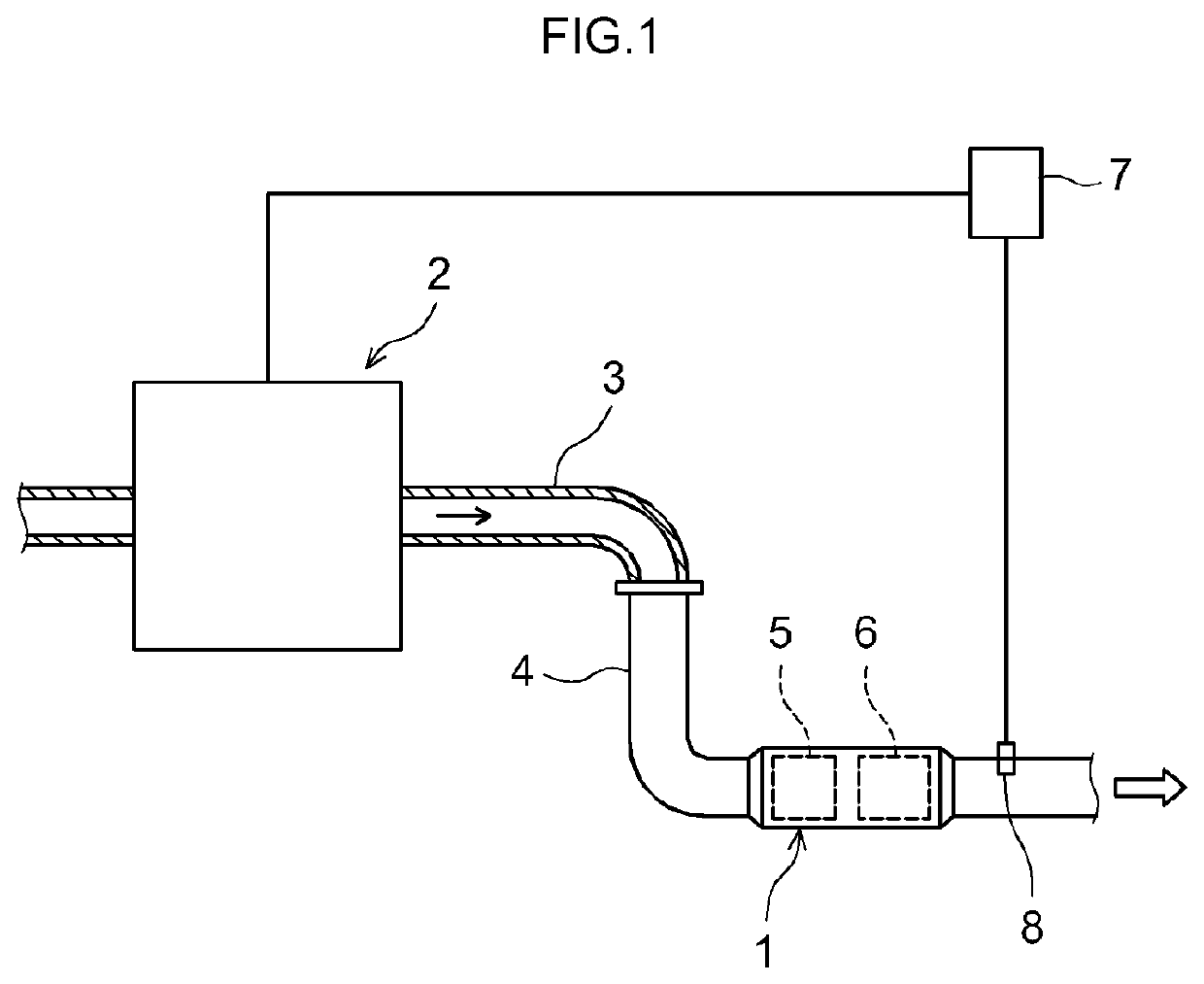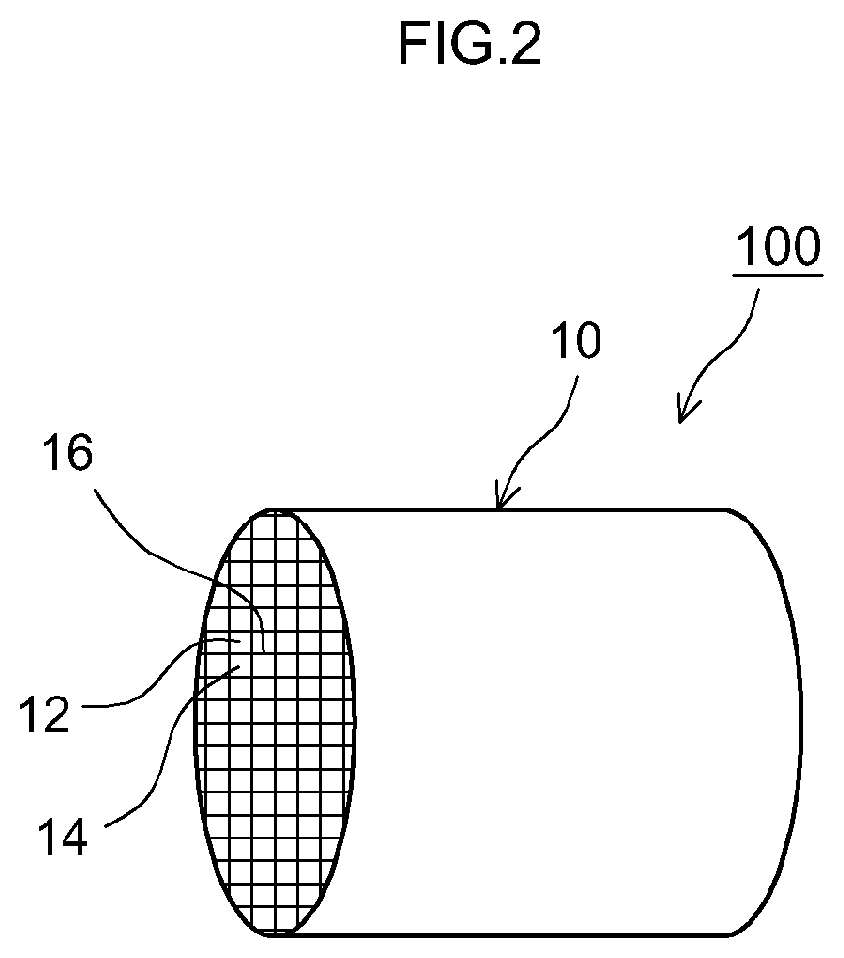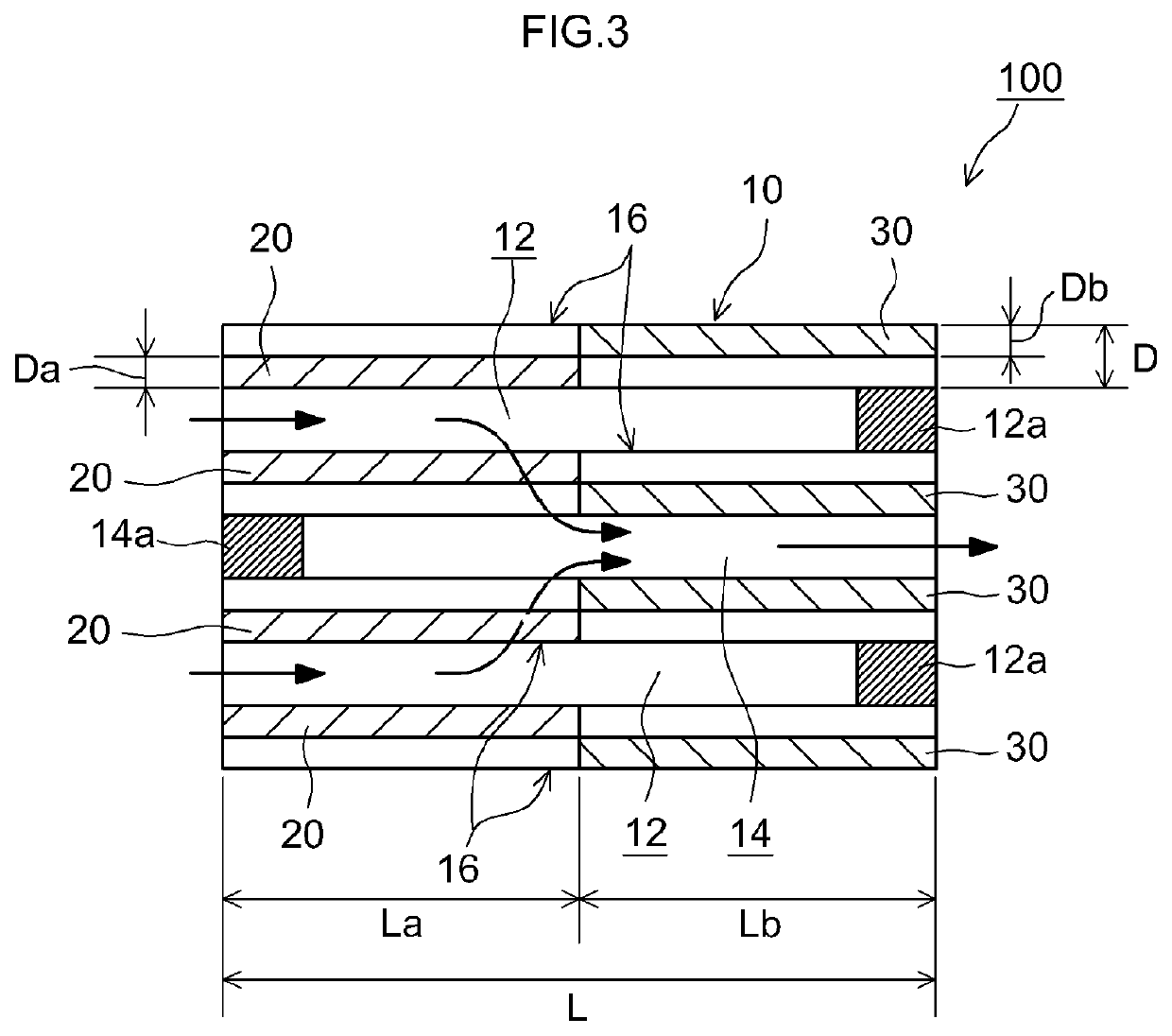Exhaust gas purification device
a purification device and exhaust gas technology, applied in physical/chemical process catalysts, metal/metal-oxide/metal-hydroxide catalysts, separation processes, etc., can solve problems such as air pollution, achieve the effect of suppressing the sintering of noble metals with each other, facilitating flow, and suppressing the degradation of catalysts
- Summary
- Abstract
- Description
- Claims
- Application Information
AI Technical Summary
Benefits of technology
Problems solved by technology
Method used
Image
Examples
example 1
[0070]A particulate filter containing Pd in the upstream catalyst layer and containing Rh in the downstream catalyst layer was produced. Specifically, there was prepared ceria-zirconia complex oxide as a carrier for upstream catalyst layer formation. The ceria-zirconia complex oxide was impregnated with a solution of Pd nitrate, as a noble metal catalyst solution, followed by evaporation to dryness, to prepare a Pd / ceria-zirconia complex oxide carrier powder supporting 1.91 mass % of Pd. Then a slurry A was prepared by mixing 62.2 parts by mass of the Pd / ceria-zirconia complex oxide carrier powder, 36.61 parts by mass of alumina, 18.32 parts by mass of BaSO4, and deionized water. Next, this slurry A was applied through suction onto a portion of a cordierite substrate (wall-flow-type substrate illustrated in FIG. 2 and FIG. 3: diameter 103 mm, total length 100 mm) corresponding to 50% of the length L of the substrate from the exhaust gas inflow end section towards the downstream side...
example 2
[0072]A particulate filter was produced in the same way as in Example 1, but herein the coating amount of the upstream catalyst layer per L of volume of substrate was set to 60 g / L, the coating amount of the downstream catalyst layer per L of volume of substrate was set to 140 g / L, and the proportion of the coating amount of the upstream catalyst layer with respect to the total coating amount of the upstream catalyst layer plus the downstream catalyst layer was set to 30%.
example 3
[0073]A particulate filter was produced in the same way as in Example 1, but herein the coating amount of the upstream catalyst layer per L of volume of substrate was set to 80 g / L, the coating amount of the downstream catalyst layer per L of volume of substrate was set to 120 g / L, and the proportion of the coating amount of the upstream catalyst layer with respect to the total coating amount of the upstream catalyst layer plus the downstream catalyst layer was set to 40%.
PUM
| Property | Measurement | Unit |
|---|---|---|
| porosity | aaaaa | aaaaa |
| porosity | aaaaa | aaaaa |
| thickness | aaaaa | aaaaa |
Abstract
Description
Claims
Application Information
 Login to View More
Login to View More - R&D
- Intellectual Property
- Life Sciences
- Materials
- Tech Scout
- Unparalleled Data Quality
- Higher Quality Content
- 60% Fewer Hallucinations
Browse by: Latest US Patents, China's latest patents, Technical Efficacy Thesaurus, Application Domain, Technology Topic, Popular Technical Reports.
© 2025 PatSnap. All rights reserved.Legal|Privacy policy|Modern Slavery Act Transparency Statement|Sitemap|About US| Contact US: help@patsnap.com



